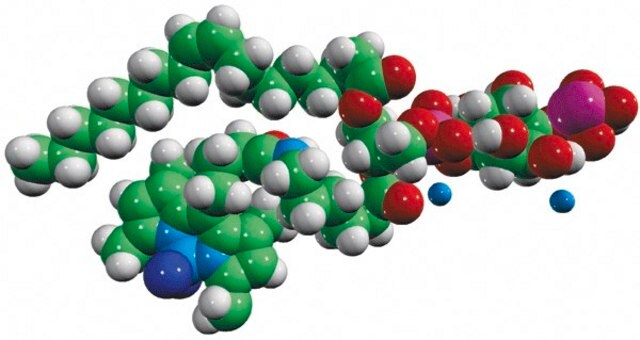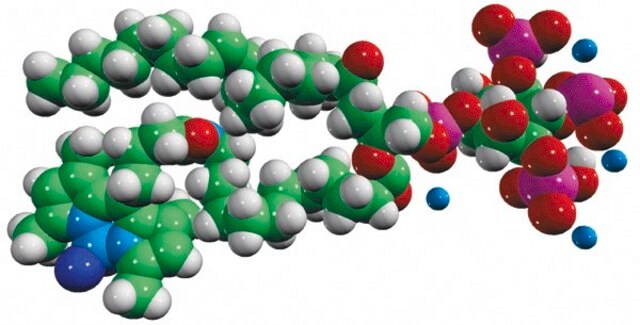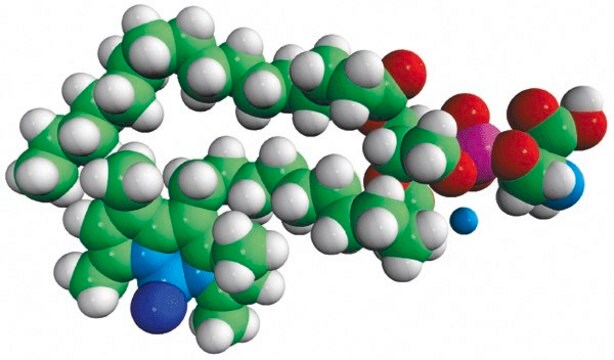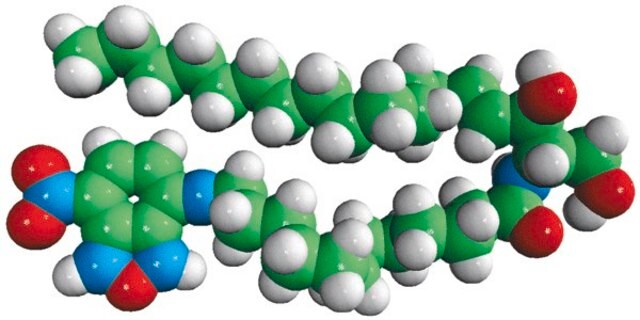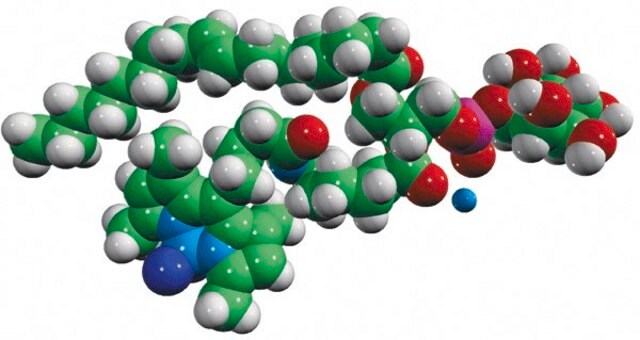810186P
Avanti
TopFluor™ PI(3,5)P2
Avanti Research™ - A Croda Brand 810186P, powder
Synonym(e):
1-oleoyl-2-{6-[4-(dipyrrometheneboron difluoride)butanoyl]amino}hexanoyl-sn-glycero-3-phosphoinositol-3,5-bisphosphate (ammonium salt)
About This Item
Empfohlene Produkte
Assay
>99% (TLC)
Form
powder
Verpackung
pkg of 1 × 50 μg (with stopper and crimp cap (810186P-50ug))
Hersteller/Markenname
Avanti Research™ - A Croda Brand 810186P
Versandbedingung
dry ice
Lagertemp.
−20°C
Allgemeine Beschreibung
Biochem./physiol. Wirkung
Verpackung
Rechtliche Hinweise
Lagerklassenschlüssel
11 - Combustible Solids
WGK
WGK 3
Flammpunkt (°F)
No data available
Flammpunkt (°C)
No data available
Hier finden Sie alle aktuellen Versionen:
Analysenzertifikate (COA)
Leider sind derzeit keine COAs für dieses Produkt online verfügbar.
Wenn Sie Hilfe benötigen, wenden Sie sich bitte an Kundensupport
Besitzen Sie dieses Produkt bereits?
In der Dokumentenbibliothek finden Sie die Dokumentation zu den Produkten, die Sie kürzlich erworben haben.
Unser Team von Wissenschaftlern verfügt über Erfahrung in allen Forschungsbereichen einschließlich Life Science, Materialwissenschaften, chemischer Synthese, Chromatographie, Analytik und vielen mehr..
Setzen Sie sich mit dem technischen Dienst in Verbindung.
